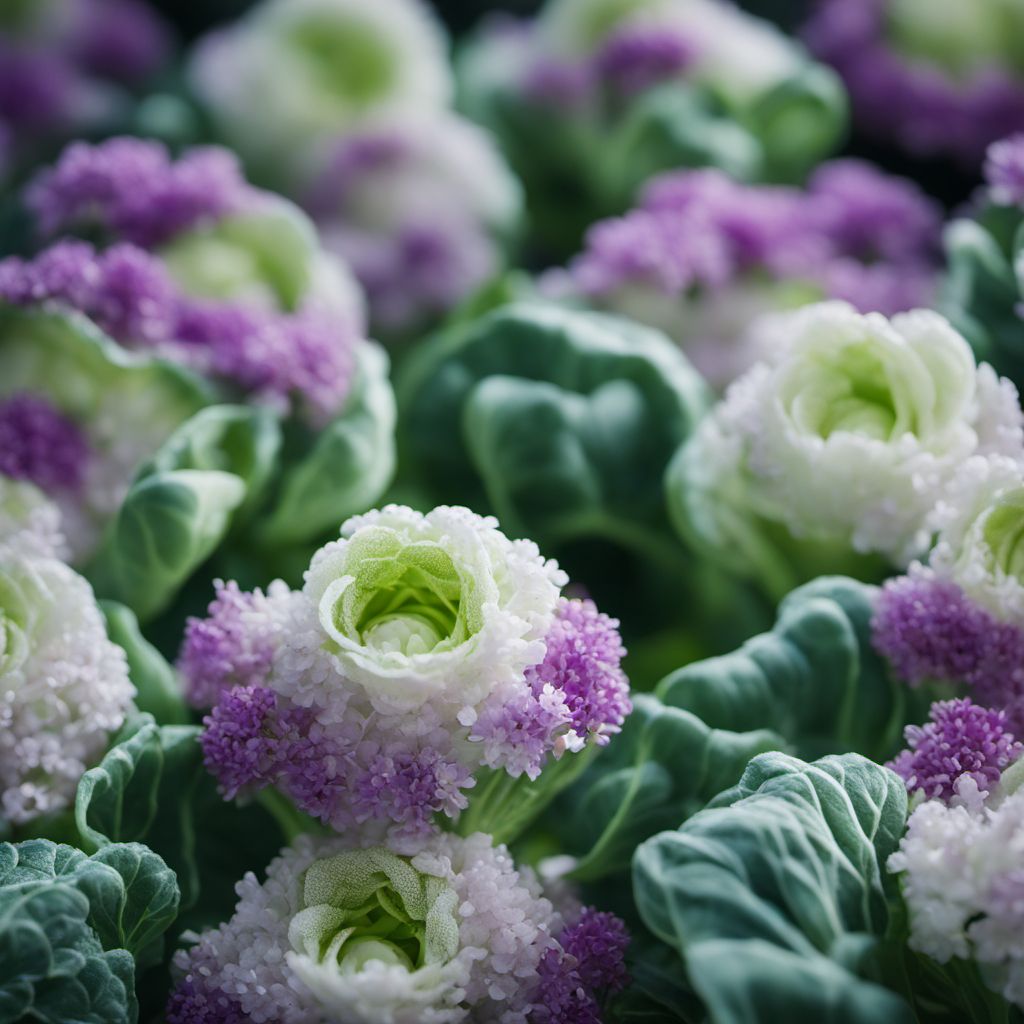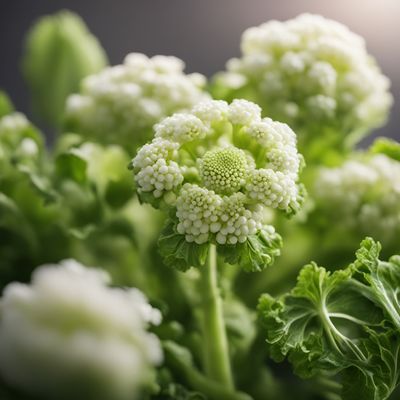
Ingredient
Flowering brassica
The Blooming Beauty: Exploring the Delicate World of Flowering Brassica
Flowering brassica encompasses a variety of edible flowers from the brassica family, including broccoli, cauliflower, kale, and mustard flowers. These delicate blooms come in vibrant colors, such as yellow, white, and purple, and feature intricate petals and green stems. With a mild and slightly bitter taste, flowering brassica adds a delightful crunch and a burst of flavor to dishes. The texture of these flowers can range from tender to slightly fibrous, depending on the specific variety.
Origins and history
The cultivation and consumption of flowering brassica can be traced back to ancient civilizations, particularly in the Mediterranean and Asia. These flowers have been used in traditional cuisines for centuries, adding both visual appeal and unique flavors to dishes. Over time, they have gained popularity in various culinary traditions around the world.
Nutritional information
Flowering brassica is a nutritional powerhouse, rich in vitamins A, C, and K, as well as fiber and antioxidants. It is low in calories and carbohydrates, making it a healthy addition to any diet.
Allergens
There are no known allergens associated with flowering brassica.
How to select
When selecting flowering brassica, look for fresh, vibrant blooms with intact petals and crisp stems. Avoid flowers that are wilted, discolored, or have signs of decay. Opt for organically grown flowers whenever possible to ensure they are free from pesticides.
Storage recommendations
To maintain the freshness of flowering brassica, gently wrap the flowers in a damp paper towel and store them in a sealed container in the refrigerator. They can stay fresh for up to a week.
How to produce
Flowering brassica can be grown by amateur gardeners in well-drained soil with full sun exposure. Start by sowing seeds or transplanting seedlings in early spring or fall, depending on the specific variety. Regular watering and proper care will help the plants thrive and produce beautiful flowers.
Preparation tips
Before using flowering brassica, gently rinse the flowers under cold water to remove any dirt or debris. Trim the stems if necessary. These flowers can be used as a garnish, added to salads, soups, stir-fries, or even infused into oils and vinegars for a unique flavor twist. Use them sparingly to avoid overpowering the dish.
Culinary uses
Flowering brassica is commonly used as a decorative element in salads, desserts, and cocktails. It can also be used to infuse oils, vinegars, or syrups, adding a delicate floral note to dressings, marinades, or beverages.
Availability
Flowering brassica is commonly available in regions with temperate climates, including North America, Europe, and parts of Asia.


